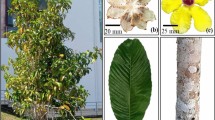Abstract
Prevention of hyperglycemia and enhancement of antioxidant defense mechanisms remain major goals in the treatment of diabetic cataract. Earlier, we reported strong anti-hyperglycemic and in vitro antioxidant potential of the combined formulation of grape seed extract and Zincovit tablets. Therefore, the current study was designed to investigate effects of combined formulation of grape seed extract and Zincovit tablets against streptozocin-induced diabetic cataract in Wistar rats. Adult Wistar rats were selected and diabetes was induced by streptozocin (35 mg/kg, i.p) and divided into four groups (group II-V). The normal control (group I) and streptozocin-induced diabetic cataract control rats received only vehicle. Groups III, IV and V animals received orally 40, 80 and 160 mg/kg of combined formulation of Zincovit tablets with grape seed extract respectively for a period of 150 days. The biochemical pathways involved in the pathogenesis of cataract such as oxidative stress, polyol pathway and alterations in adenosine triphosphate, glucose-6-phosphate dehydrogenase and blood glucose were investigated, to understand the possible mechanism of action of combined formulation of grape seed extract and Zincovit tablets. Rats treated with combined formulation of grape seed extract and Zincovit tablets delayed the progression of diabetic cataract as well as it showed significant alterations in oxidative stress markers along with blood glucose, aldose reductase, glucose-6-phosphate dehydrogenase and adenosine triphosphate level in lens. Over all, the results suggest that single combined formulation of grape seed extract and Zincovit tablets may be of great value in delaying diabetic cataract of human subjects as nutritional food supplement.



Similar content being viewed by others
References
Aleo MD, Doshna CM, Navetta KA (2005) Ciglitazone-induced lenticular opacities in rats: in vivo and whole lens explant culture evaluation. JPET 312(3):1027–1033
Cariello AJ, Casanova FH, Filho ADL, Juliano Y, Tabosa A (2006) Effect of electroacupuncture to prevent selenite-induced cataract in Wistar rats. Arq Bras Oftalmol 69(3):299–303
Chis IC, Ungureanu MI, Marton A et al (2009) Antioxidant effects of a grape seed extract in a rat model of diabetes mellitus. Diabetes Vasc Dis Res 6:200–204
Chung SS, Ho EC, Lam KS, Chung SK (2003) Contribution of polyol pathway to diabetes-induced oxidative stress. J Am Soc Nephrol 14:S233–S236
Creighton MO, Ross WM, Stewart-DeHaan PJ, Sanwal M, Trevithick JR (1985) Modelling cortical cataractogenesis VII: effects of vitamin E treatment on galactose-induced cataracts. Exp Eye Res 40:213–222
Farvid MS, Jalali M, Siassi F et al (2005) Comparison of the effects of vitamins and/or mineral supplementation on glomerular and tubular dysfunction in type 2 diabetes. Diabetes Care 28:2458–2464
Gupta SK, Kalaiselvan V, Srivastava S, Saxena R, Agrawal SS (2009) Inhibitory effect of Trigonella foenum-graecum on galactose induced cataracts in a rat model; in vitro and in vivo studies. J Ophthal Vis Res 4:213–219
King H, Aubert RE, Herman WH (1998) Global burden of diabetes, 1995–2025: prevalence, numerical estimates, and projections. Diabetes Care 21:1414–1431
Kinoshita JH (1974) Mechanism initiating cataract formation. Invest Ophthalmol Vis Sci 13:713–724
Kowluru RA, Tang J, Kern TS (2001) Abnormalities of retinal metabolism in diabetes and experimental galactosemia. VII. Effect of long-term administration of antioxidants on the development of retinopathy. Diabetes 50:1938–1942
Matsuoka R, Watanabe M, Ueno H (1997) A study of coloring in human lens nucleus-association of four inorganic elements and dielectric behavior with nuclear color. Nihon Ganka Gakkai Zasshi 101(4):359–364
Mohan V, Sandeep S, Deepa R, Shah B, Varghese C (2007) Epidemiology of type 2 diabetes: Indian scenario. Indian J Med Res 125:217–230
Moustafa SA (2004) Zinc might protect oxidative changes in the retina and pancreas at the early stage of diabetic rats. Toxicol Appl Pharmacol 20:149–155
Mustata GT, Rosca M, Biemel KM, Reihl O, Smith MA et al (2005) Paradoxical effects of green tea (Camellia sinensis) and antioxidant vitamins in diabetic rats: improved retinopathy and renal mitochondrial defects but deterioration of collagen matrix glycoxidation and cross-linking. Diabetes 54:517–526
Nakamura Y, Tsuji S, Tonogai Y (2003) Analysis of proanthocyanidins in grape seed extracts, health foods and grape seed oils. J Health Sci 49:45–54
Penn JS, Madan A, Caldwell RB, Bartoli M, Caldwell RW et al (2008) Vascular endothelial growth factor in eye disease. Prog Retin Eye Res 27:331–371
Satyam SM, Bairy KL (2013) Antioxidant activity of combination of Grape seed extract and Zincovit tablets (nutritional food supplement) on free radical scavenging in vitro models. Jokull J 63:360–369
Satyam SM, Bairy KL, Pirasanthan R (2013) Influence of Grape seed extract and Zincovit tablets (Nutritional food supplement) on glucose level in normal and streptozocin induced diabetic rats. Int J Pharm Sci 5(3):413–416
Spector A (2000) Oxidative stress and disease. J Ocul Pharmacol Ther 16:193–201
Suryanarayana P, Saraswat M, Mrudula T, Krishna TP, Krishnaswamy K, Reddy GB (2005) Curcumin and turmeric delay streptozotocin-induced diabetic cataract in rats. Invest Ophthalmol Vis Sci 46:2092–2099
Tausz T, Sircelj H, Grill D (2004) The glutathione system as a stress marker in plant ecophysiology: is a stress-response concept valid? J Exp Bot 55:1955–1962
Yamakoshi J, Saito M, Kataoka S, Tokutake S (2002) Procyanidin-rich extract from grape seeds prevents cataract formation in hereditary cataractous (ICR/f) rats. J Agric Food Chem 50(17):4983–4988
Zimmet PZ (1999) Diabetes epidemiology as a tool to trigger diabetes research and care. Diabetologia 42:499–518
Acknowledgments
All the authors declare that they do not have any conflict of interest. This work was financially supported by Apex Laboratories Private Ltd., Chennai (India) for which authors are grateful.
Author information
Authors and Affiliations
Corresponding author
Rights and permissions
About this article
Cite this article
Satyam, S.M., Bairy, L.K., Pirasanthan, R. et al. Grape seed extract and Zinc containing nutritional food supplement delays onset and progression of Streptozocin-induced diabetic cataract in Wistar rats. J Food Sci Technol 52, 2824–2832 (2015). https://doi.org/10.1007/s13197-014-1305-y
Revised:
Accepted:
Published:
Issue Date:
DOI: https://doi.org/10.1007/s13197-014-1305-y




